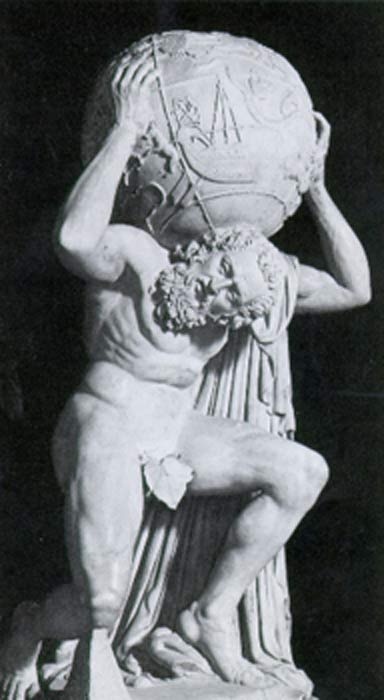Long Lost Star Catalog Found in Plain Sight

The long lost star catalog of Hipparchus has been under our noses - or, more accurately, slightly above them - for more than 1,800 years.
Sitting atop the broad shoulders of a seven-foot statue known as the Farnese Atlas is a sky globe depicting the nighttime sky. Scientists have been able to match the constellations shown on the globe with descriptions from Hipparchus's only surviving work, Commentaries, and have concluded that this is a marble copy of his star catalog.
Hipparchus, who was Greek, was one of the greatest of the ancient astronomers and did his most important work between 140-125 BC. He calculated the length of the year to within six and a half minutes, developed a scale to rate the brightness of stars, was the first to record a nova, theorized on the motions of the Sun and Moon, provided high quality planetary observations and created the first ever catalog of 1,000 stars.
Perhaps his most important observation, and the one that provided the key to determining the Atlas held his catalog, was precession. Precession is the wobbling of Earth on its axis, like a spinning top as it slows down, over long periods of time. This wobbling is on a 26,000 year cycle, and causes the stars to appear to move across the sky. For example, Polaris, the North Star, is currently above the North Pole, but it has not always been so and will not be in the future.
Bradley Schafer of Louisiana State University, Baton Rouge combined data from the precession cycles with measurements he took of 70 positions on the globe and used a mathematical model to determine what point in time the Atlas's sky globe represents. Schafer determined that the best date for the original observations was 125 BC, with a normal margin of error of ? 55 years.
The date of 125 BC immediately suggests that this is the lost catalog of Hipparchus, who created his star catalog in 129 BC. The 125 BC date also eliminates all previously proposed candidates for this star catalog. The works of Aratus (275 BC), Eudoxus (366 BC), and the Assyrian observer (1130 BC), are all too early, while Ptolemy's work in 128 AD is too late to match up to this star catalog.
Providing more evidence that the constellation figures on the Farnese Atlas were based on a star catalog is that the accuracy is within 3.5 degrees - which would not be possible based on the simple verbal descriptions provided by Aratus or Eudoxus, which only have accuracy of about 8 degrees.
Get the Space.com Newsletter
Breaking space news, the latest updates on rocket launches, skywatching events and more!
Additionally, the Atlas sky globe shares no differences and many unique similarities with the constellations Hipparchus described in Commentaries.
The Farnese Atlas, dating to 150 AD, is a well known Roman copy of a Greek statue, and depicts 41 constellations, the celestial equator, tropics, and ecliptic. It is currently in the Farnese Collection in the National Archaeological Museum in Naples, Italy. Atlas was sentenced by Zeus to hold up the sky - this Atlas holds the nighttime sky.
"Perhaps the most fascinating part of the discovery is simply that we have recovered one of the most famous known examples of 'lost ancient wisdom,'" Schafer said.
This article is part of SPACE.com's weekly Mystery Monday series
Join our Space Forums to keep talking space on the latest missions, night sky and more! And if you have a news tip, correction or comment, let us know at: community@space.com.









